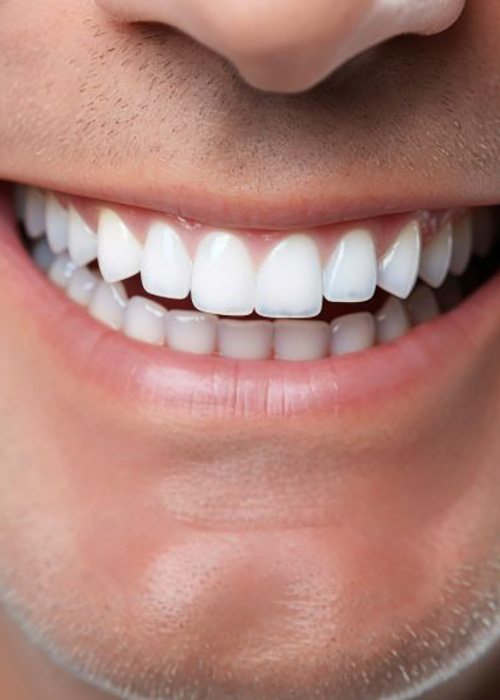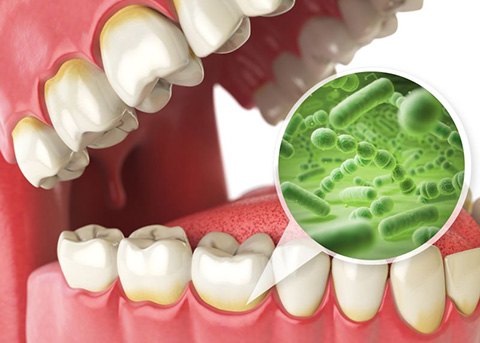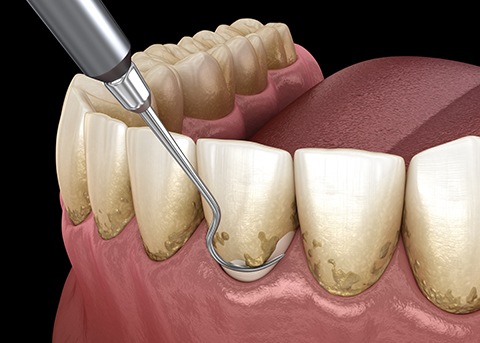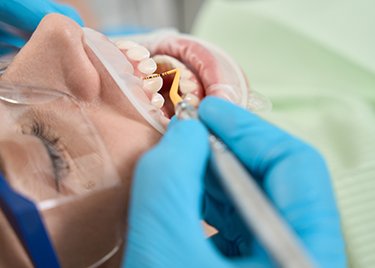Gum Disease Treatment Cumming
Healthier Gums for a Healthier Body

Gum disease is one of the most common oral health problems. Left untreated, it can lead to devastating consequences for both your smile and your overall health! The good news is that gum disease is highly treatable. Our Cumming, GA, dental team often helps patients overcome this condition through minimally invasive, non-surgical means. Continue reading below to learn more, or contact our office directly to request a consultation.
Why Choose Bragg Dental Cosmetic & Family Dentistry for Gum Disease Treatment?
- Non-Surgical Treatment
- Compassionate & Skilled Team
- Preserve Your Oral Health
What Is Gum Disease?

Gum disease, also known as periodontal disease, is an infection of the gum tissue, the pink tissue that surrounds the roots of the teeth. often, it occurs when missteps in oral hygiene allow harmful bacteria to multiply and slip beneath the gumline.
There are two main stages of gum disease:
- This is the early stage of gum disease and is often fully reversible.
- This advanced stage of gum disease may cause irreversible damage to the gums and underlying bone structure.
Without timely treatment, gum disease has the potential to increase your risk of heart attack, stroke, diabetes, and other serious conditions.
Symptoms of Gum Disease

Gum disease can cause a variety of symptoms. If you have gingivitis, you might experience the following:
- Persistent bad breath
- Red, swollen gums that are tender and bleed easily when you brush and floss
- Minor gum recession
Periodontitis can cause symptoms that are similar to gingivitis. However, it is more severe. It can also cause loose teeth, pronounced gum recession, sensitive teeth, changes in your bite, and even tooth loss.
How Do We Treat Gum Disease?

There are different ways to treat gum disease. In some mild cases, you might just need to change your at-home oral hygiene routine; our team can provide tailored advice and follow-up with you to monitor your progress. Or, you may be a candidate for scaling and root planing, which is also known as a deep cleaning of the mouth.
Scaling & Root Planing

Scaling and root planing is a two-step process that is used in the early stages of gum disease to prevent it from worsening. First, your dental team will clear away all the plaque and tartar from above and below your gumline to control any harmful oral bacteria accumulation. This step helps to restore the health of your oral tissues and reduces common symptoms like inflammation and tenderness. Next, they will smooth out the roots of your teeth, so your gums are able to healthily reattach to them.
Do I Need Scaling & Root Planing?

Are you noticing warning signs of gum disease like bleeding when you brush or floss, receding gums, chronic bad breath, visible plaque build-up, or swollen, puffy gums? These symptoms may make you an excellent candidate for scaling and root planing.
While some early stages of gum disease can be remedied by practicing good at-home oral hygiene, if the condition has progressed scaling and root planing may be necessary to prevent this condition from worsening.
The Process of Scaling & Root Planing

Typically, scaling and root planing takes place over two appointments with your dentist:
- First – using a dental scaler, your team will scale away all the plaque and tartar from the surfaces of your teeth, reaching as far down as the pockets of your gums.
- Second – during the planing portion of treatment, your dentist will remove the hardened bacterial deposits on the roots of your teeth that are hidden beneath the gumline. This will help prevent further infection by preventing the bacteria from re-colonizing in your gums.
Aftercare Tips for Scaling & Root Planing

Because scaling and root planing can be an intensive treatment, it could take a few weeks for your teeth and gums to recover. You may experience some increased sensitivity and discomfort as a natural part of your healing process. Here are some general aftercare tips for your scaling and root planing procedure:
- Rinse your gums with warm saltwater after each meal; this will help prevent irritation and loosen food debris around the teeth so brushing and flossing is easier. To make the saltwater, simply combine ¼ teaspoon salt for eight ounces of water.
- Be very gentle while brushing after treatment and be sure to use a soft-bristled toothbrush to prevent irritation and bleeding. Instead of brushing your teeth in a back-and-forth motion, use slow, circular motions to avoid irritation.
- Your teeth and gums may be temporarily sensitive to certain foods and beverages following scaling and root planing. Thus, it is best to avoid any foods that are hot or spicy, as well as alcohol and acidic drinks. Furthermore, avoid using tobacco products, including cigarettes, vapes, and chewing tobacco, as these can slow healing and increase your risk of infection.
- Eat a soft diet for the first 48 hours after treatment.
- Avoid any intense physical activity directly after your procedure to avoid prolonging the healing process by diverting blood away from your mouth.
